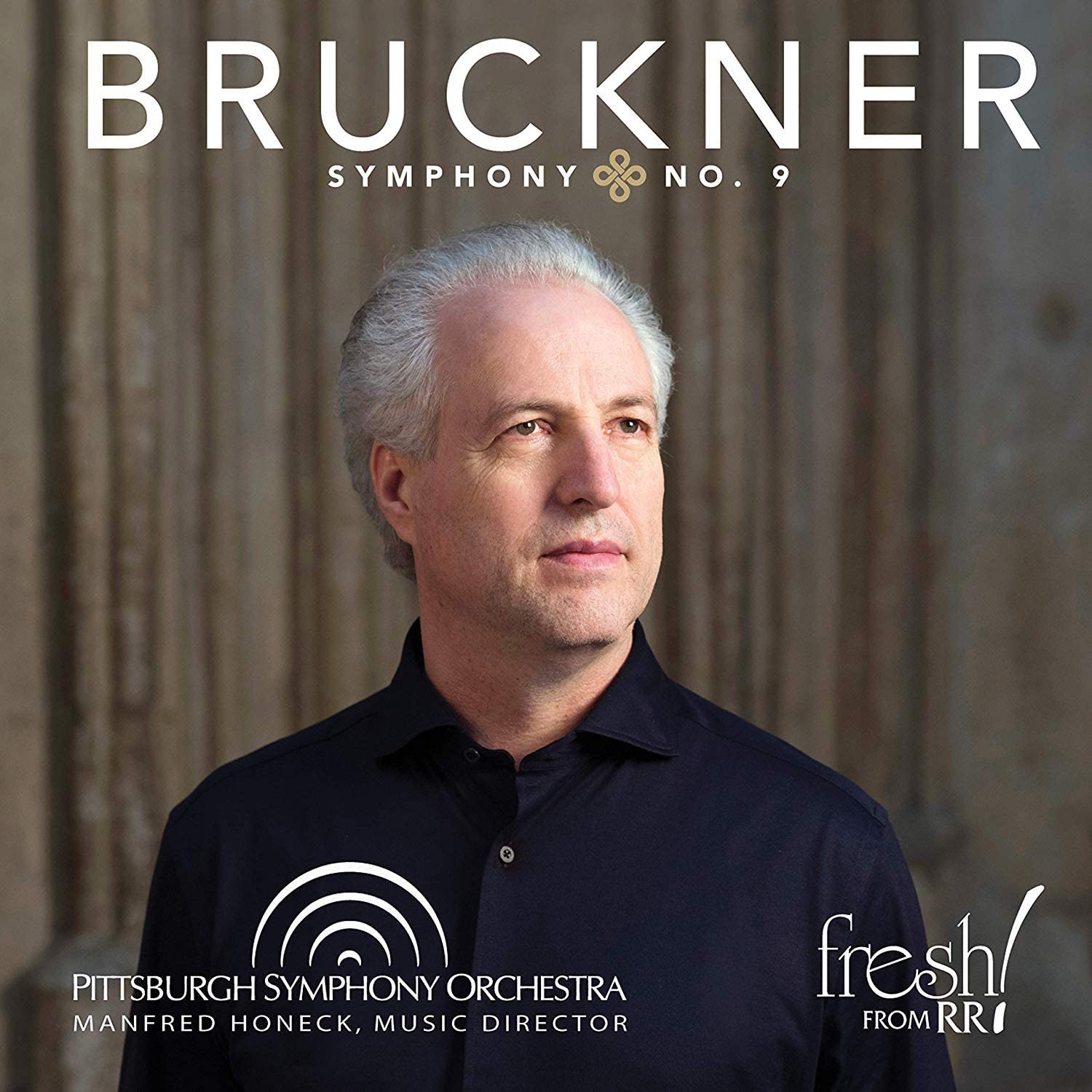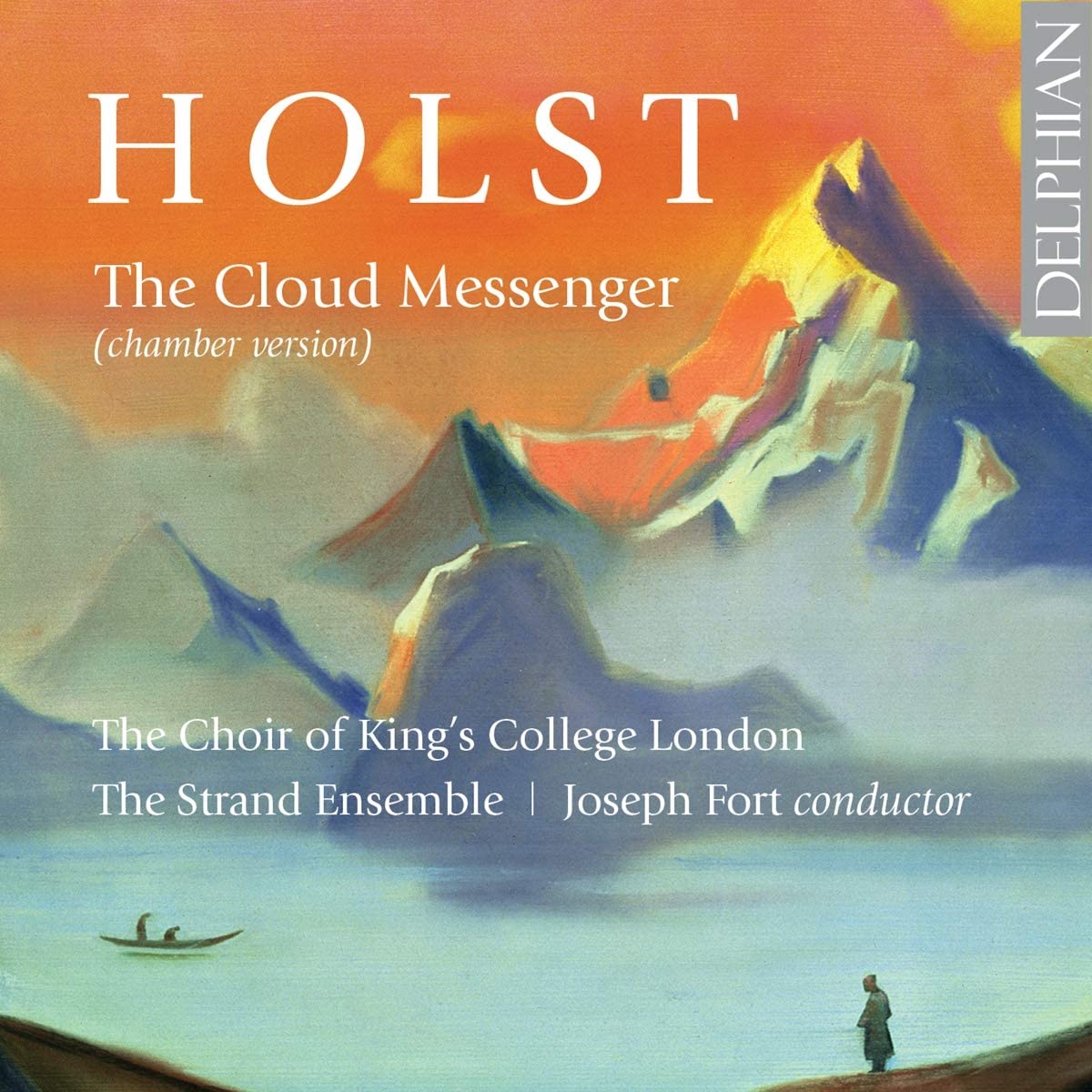Classical CDs Weekly: Bruckner, Holst, Piazzolla | reviews, news & interviews
Classical CDs Weekly: Bruckner, Holst, Piazzolla
Classical CDs Weekly: Bruckner, Holst, Piazzolla
Austrian symphonic gravitas, English exotica and tangos from Ireland

 Bruckner: Symphony No. 9 Pittsburgh Symphony Orchestra/Manfred Honeck (Reference Recordings)
Bruckner: Symphony No. 9 Pittsburgh Symphony Orchestra/Manfred Honeck (Reference Recordings)
I’m midway through exploring a cycle of symphonies by Heinz Winbeck, a German contemporary composer very much in the Bruckner tradition. I’ll report back next week, but, as a stopgap, here’s an incandescent live recording of Bruckner 9. The recent Berlin Philharmonic box set includes Rattle’s second account of the piece, including the completed finale. I find it pretty convincing, but Manfred Honeck’s Pittsburgh Symphony Orchestra opt for the standard three-movement version. The playing is marvellous, and Honeck’s sober, clear-sighted approach is compelling. There’s the playing, too – few conductor/orchestra combinations regularly release recordings which sound this spectacular. Lower strings have incredible resonance and weight, and the Pittsburgh brass don’t disappoint, horns and Wagner tubas immaculate in the slow movement’s exposed corners. Getting Bruckner ‘right’ is a notoriously inexact science. It’s not about tempi, or dynamics, but something more intangible. Honeck gets it, sensing just how long to linger in the corners where Bruckner stands still and bringing out the fleeting lyricism. This is a dark work, and without fleeting glimpses of sunlight it becomes a suffocating experience. So, while the stygian cathedral-like opening rightly invokes awe, Honeck follows Bruckner’s directions and gives us a second subject which really is ‘Innig’ (‘intimate and tender’), looking back to Schubert. The long first movement is brilliantly controlled, the coda both agonising and spectacular.
There’s little relief in the nihilistic scherzo, though Honeck does his best to bring out the black humour, comparing moments in the Trio to Strauss’s Till Eulenspiegel, written just two years later. Bruckner’s vast slow movement is a symphony in itself, the threads leading inexorably to a bone crunching dissonant chord rivalling that in Mahler 10. You may disagree with Honeck’s very personal take on the music’s spiritual subtext, but the results are compelling, and incredibly moving. Wonderful, in other words. The sound quality is astonishingly vivid. Honeck’s articulate sleeve note is fascinating, and you don’t need a magnifying glass to read it. This is the best three-movement Bruckner 9 I’ve heard, happily sharing shelf space with Rattle’s take on the complete symphony.
 Holst: The Cloud Messenger (chamber version arr. Joseph Fort) The Choir of KIng's College London, The Strand Ensemble/Joseph Fort, with Caitlin Goreing (alto) (Delphian)
Holst: The Cloud Messenger (chamber version arr. Joseph Fort) The Choir of KIng's College London, The Strand Ensemble/Joseph Fort, with Caitlin Goreing (alto) (Delphian)
Holst took inspiration from an eclectic range of sources, his large scale choral ode The Cloud Messenger described by some as "the crowning glory of the composer's Sanskrit period." Holst's knowledge of Sanskrit was good enough for him to be able to make his own translations and adaptations, and he based The Cloud Messenger on a fifth century poem by Kālidāsa. In it, an exiled nature spirit petitions a passing cloud to take a declaration of love to his distant wife. Part travelogue, part lovesong, it's a disarmingly lovely work, the cloud's eventual arrival initially set to music of hushed restraint ("I, the cloud, bring thee tidings of him who is ever thine... loneliness increases his love.") before a rapturous, love-sick coda. Holst's mixture of the homespun and the exotic throws up plenty of arresting music, with several passages sounding thrillingly contemporary. How can such a striking, individual work be so little known, and who could ever accuse English composers of being parochial and insular? Alas, the 1913 premiere was a disaster, the choir having to sight-read the Cloud's closing message and the performance breaking down. Holst's original used a large orchestra with restraint. Here we get conductor Joseph Fort's new chamber reduction, effective because so much was already lightly scored. And using a crack chamber choir means that every word is audible, Fort's Choir of King's College London boldly taking ownership of the piece.
Holst's Five Partsongs were composed a decade earlier, their simpler idiom partly an attempt by the composer to write music which stood a chance of being published and readily performed. They're delightful, Holst's language invariably perfectly matched to the texts' demands. "Ye little birds" is an earworm, as is "Now is the month of Maying", both joyous here. The closer, "Come to me", sets a melancholy Christina Rosetti poem to music of consolatory beauty. Excellent notes, full texts and impressively warm sound too.
 Astor Piazzolla: The Four Seasons of Buenos Aires Irish Chamber Orchestra/Katherine Hunka (violin/director) (Orchid Classics)
Astor Piazzolla: The Four Seasons of Buenos Aires Irish Chamber Orchestra/Katherine Hunka (violin/director) (Orchid Classics)
Astor Piazzolla's family skipped from Buenos Aires to New York in 1924, his father Vincent opening a barber's shop. What better place for a young musician could there be, and it's tempting to think that Piazzolla's gift for fusing classical and vernacular idioms took root here. His The Four Seasons of Buenos Aires wasn't conceived as a complete work, its four movements composed separately in the 1960s. It's become best known in this arrangement for violin and strings made by Leonid Desyatnikov for Gidon Kremer, Desyatnikov cheekily inserting references to Vivaldi's original. Kremer's Nonesuch recording is excellent, but I'd suggest that this new one, taped in Limerick by Katherine Hunka and the Irish Chamber Orchestra, matches it in terms of bite and brio. Listen to the percussive scrapes and squeaks in low strings which begin "Autumn", and how well Hunka matches them in terms of attitude. The ensemble is so tight, but the results have such spontaneity. How can you not smile at the descending plucked bassline at the slow centre of “Winter”? The cheeky nod to a ubiquitous canon which ends the section never sounds arch. A blast.
Interesting couplings too. Schubert’s Rondo in A can’t help seeming a little bland after Piazzolla, however sweetly Hunka performs it, but Schnittke’s Moz-Art à la Haydn enlivens proceedings no end, Hunka's co-soloist her colleague Nicola Sweeney. This inventive riff on Haydn’s ‘Farewell’ Symphony needs to be seen as well as heard, though Andrew Keener’s production almost compensates. Listen through headphones and you can visualise the departing orchestral players shuffling across the studio floor. Piazzolla’s late tango Oblivion makes for a bittersweet encore. As with the Holst, Orchid Classics' sleeve notes are erudite but accessible, and the production values are impressive.
Explore topics
Share this article
The future of Arts Journalism
You can stop theartsdesk.com closing!
We urgently need financing to survive. Our fundraising drive has thus far raised £49,000 but we need to reach £100,000 or we will be forced to close. Please contribute here: https://gofund.me/c3f6033d
And if you can forward this information to anyone who might assist, we’d be grateful.

Subscribe to theartsdesk.com
Thank you for continuing to read our work on theartsdesk.com. For unlimited access to every article in its entirety, including our archive of more than 15,000 pieces, we're asking for £5 per month or £40 per year. We feel it's a very good deal, and hope you do too.
To take a subscription now simply click here.
And if you're looking for that extra gift for a friend or family member, why not treat them to a theartsdesk.com gift subscription?
more Classical music
 Hallé John Adams festival, Bridgewater Hall / RNCM, Manchester review - standing ovations for today's music
From 1980 to 2025 with the West Coast’s pied piper and his eager following
Hallé John Adams festival, Bridgewater Hall / RNCM, Manchester review - standing ovations for today's music
From 1980 to 2025 with the West Coast’s pied piper and his eager following
 Kaploukhii, Greenwich Chamber Orchestra, Cutts, St James's Piccadilly review - promising young pianist
A robust and assertive Beethoven concerto suggests a player to follow
Kaploukhii, Greenwich Chamber Orchestra, Cutts, St James's Piccadilly review - promising young pianist
A robust and assertive Beethoven concerto suggests a player to follow
 Robin Holloway: Music's Odyssey review - lessons in composition
Broad and idiosyncratic survey of classical music is insightful but slightly indigestible
Robin Holloway: Music's Odyssey review - lessons in composition
Broad and idiosyncratic survey of classical music is insightful but slightly indigestible
 Classical CDs: Wolf-pelts, clowns and social realism
British ballet scores, 19th century cello works and contemporary piano etudes
Classical CDs: Wolf-pelts, clowns and social realism
British ballet scores, 19th century cello works and contemporary piano etudes
 Bizet in 150th anniversary year: rich and rare French offerings from Palazzetto Bru Zane
Specialists in French romantic music unveil a treasure trove both live and on disc
Bizet in 150th anniversary year: rich and rare French offerings from Palazzetto Bru Zane
Specialists in French romantic music unveil a treasure trove both live and on disc
 Scottish Chamber Orchestra, Ibragimova, Queen’s Hall, Edinburgh review - rarities, novelties and drumrolls
A pity the SCO didn't pick a better showcase for a shining guest artist
Scottish Chamber Orchestra, Ibragimova, Queen’s Hall, Edinburgh review - rarities, novelties and drumrolls
A pity the SCO didn't pick a better showcase for a shining guest artist
 Kilsby, Parkes, Sinfonia of London, Wilson, Barbican review - string things zing and sing in expert hands
British masterpieces for strings plus other-worldly tenor and horn - and a muscular rarity
Kilsby, Parkes, Sinfonia of London, Wilson, Barbican review - string things zing and sing in expert hands
British masterpieces for strings plus other-worldly tenor and horn - and a muscular rarity
 From Historical to Hip-Hop, Classically Black Music Festival, Kings Place review - a cluster of impressive stars for the future
From quasi-Mozartian elegance to the gritty humour of a kitchen inspection
From Historical to Hip-Hop, Classically Black Music Festival, Kings Place review - a cluster of impressive stars for the future
From quasi-Mozartian elegance to the gritty humour of a kitchen inspection
 Shibe, LSO, Adès, Barbican review - gaudy and glorious new music alongside serene Sibelius
Adès’s passion makes persuasive case for the music he loves, both new and old
Shibe, LSO, Adès, Barbican review - gaudy and glorious new music alongside serene Sibelius
Adès’s passion makes persuasive case for the music he loves, both new and old
 Anja Mittermüller, Richard Fu, Wigmore Hall review - a glorious hall debut
The Austrian mezzo shines - at the age of 22
Anja Mittermüller, Richard Fu, Wigmore Hall review - a glorious hall debut
The Austrian mezzo shines - at the age of 22
 First Person: clarinettist Oliver Pashley on the new horizons of The Hermes Experiment's latest album
Compositions by members of this unusual quartet feature for the first time
First Person: clarinettist Oliver Pashley on the new horizons of The Hermes Experiment's latest album
Compositions by members of this unusual quartet feature for the first time

Add comment